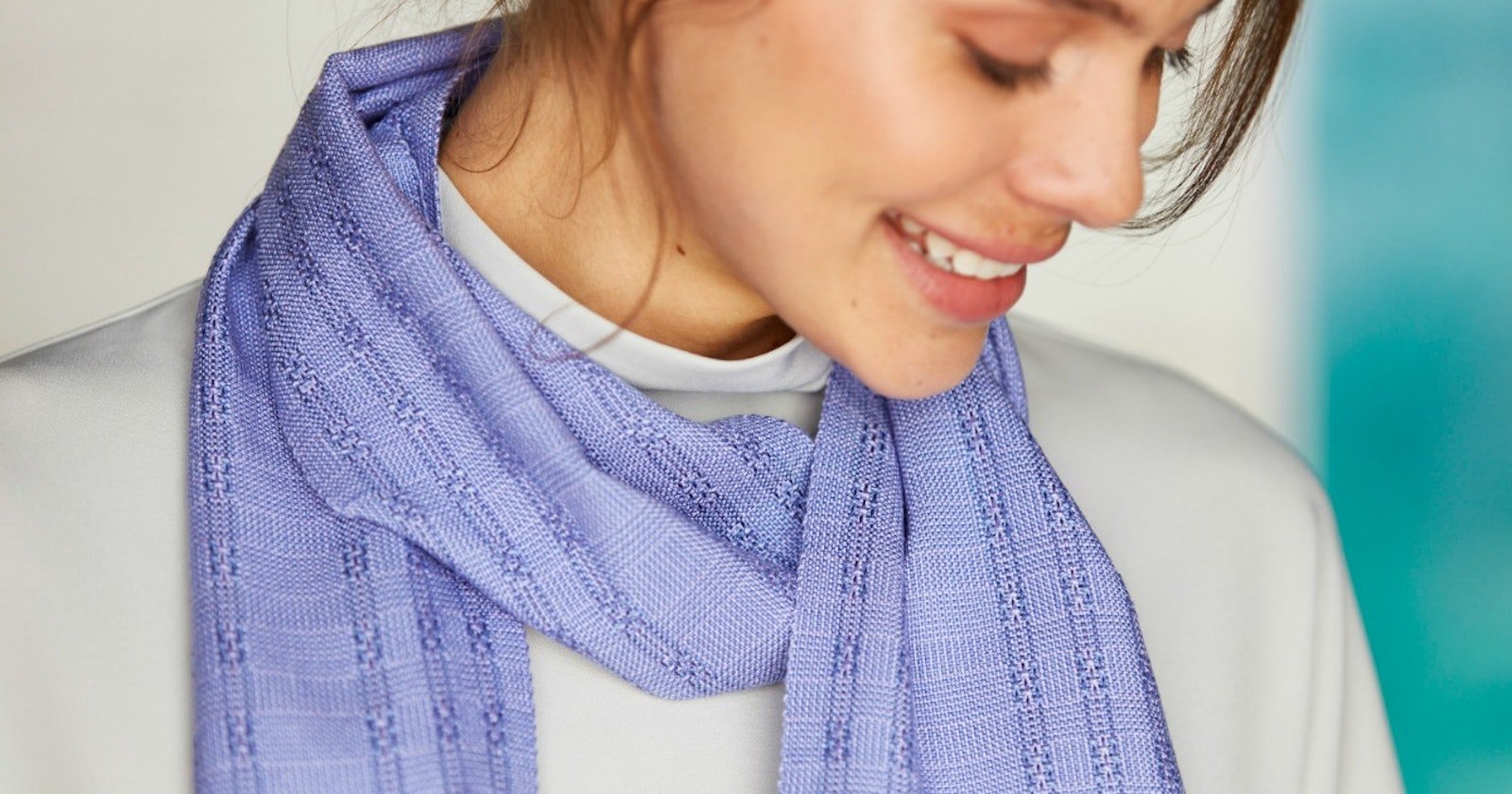Karen Donde loves lace in all its forms. Here she is to talk about lace weaving and the many lace choices, in honor of Madelyn van der Hoogt's newest video, Weaving Lace. ––Anita
 | |
| A light and lacy scarf by Madelyn van der Hoogt |
When I attended my first weavers’ guild meeting in Medford, New Jersey, the weavers’ study group was focusing on lace weaves. I barely knew warp from weft, but the samples presented were lovely, and I jumped right in volunteering to weave and share samples several months down the road.
The inspiration for the study topic was the newly published The Best of Weaver’s: Huck Lace. I think it was the third book in my weaving library, after Deborah Chandler’s Learning to Weave and Marguerite Davison’s A Handweaver’s Pattern Book. As the weeks passed, my weaving knowledge and experience eventually allowed me to understand what was written vs. simply admiring the pictures.
I settled on a lovely diamond pattern used for a wedding gown in the book. I titled my samples and presentation—as a writer and editor I’ve always been big on titles—“Diamonds are a Girl’s Best Friend.” It must have been one of the first projects I wove on the 8-shaft baby Macomber I had purchased from a local weaver. Oh my, did I enjoy weaving those samples! The rhythm of a 5-end huck treadling is so calming and seductive. “Just one more repeat,” I cried sweetly to my husband who was wondering about the dinner schedule.
I was thrilled with the white 10/2 cotton samples, and my guild mates heaped on the praise, as guild mates are known to do, especially for new weavers. Truth be told, there were some issues, but as often happens with huck lace, or Swedish lace or Atwater-Bronson lace for that matter, those pesky treadling errors didn’t show up until after I had washed and pressed the cloth.
The very elements that make classic handwoven lace exquisite also make it difficult to see weaving mistakes, or even the pattern you are weaving, while it’s on the loom. Classic woven lace is usually made with fine, firm yarns in solid light colors, sett a little more openly than a balanced tabby for a structure that is essentially plain weave with precisely placed skips or floats. This creates a lovely, lacy, light-reflective end product, but under tension on the loom, not so much.
When I teach lace weaves, I always have students cut off the samples they’ve woven at the end of day one so they can wash them that evening and dry them overnight. Our first task on day two is to press them, which brings up the sheen on the floats and emphasizes the open areas where unbound warps and/or wefts have shimmied up next to their neighbors in the wet finishing process.
"Magic!” I proclaim, waving my laser pointer around like a wand.
(Well, they know as well as I, because of the lessons on day one, that it isn’t magic at all. It’s what yarns like to do when they are not forced into a strict 90-degree interlacement. But it doesn’t hurt to open day two of a workshop with a little drama to get everyone fired up about weaving more samples.)
There are other ways to weave open, lacy cloth. Basketweave and canvas weave can look lacy with the right materials and sett. Gauze and leno make lace by twisting warp ends and holding twists together with weft. For patterned, loom-controlled lace weaves, however, I’ll turn to huck, Swedish, or Atwater-Bronson first.
Which one is best for any given project? Much is personal preference, but there are differences in threading and weaving that may guide your decision making.
With four shafts you’ll probably get more bang for your buck with huck or Swedish lace. Atwater-Bronson is actually a derivative of Swedish lace and spot Bronson and was invented by Mary Meigs Atwater in an attempt to weave multi-shaft lace. It can be woven on four shafts, but you’ll have only two pattern blocks.
Want to use a profile draft? Atwater-Bronson is a true unit weave and translates perfectly to a profile draft. Huck works differently and requires special attention to use with a profile draft. A profile draft can be used with Swedish lace, but it isn’t a true unit weave.
- Would you like warp floats and weft floats on the same surface? Huck is your choice, because this is how huck lace vs. huck spots is formed. It is possible with Atwater-Bronson and Swedish, but is not traditional and doesn’t add much to the design.
What all three have in common is beautiful, airy cloth that is a pleasure to weave. Just be patient and trust the process.


